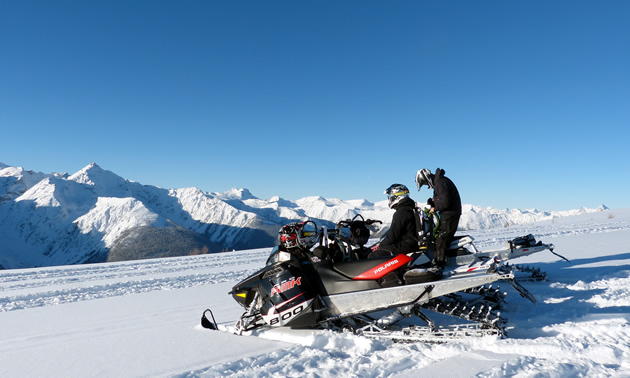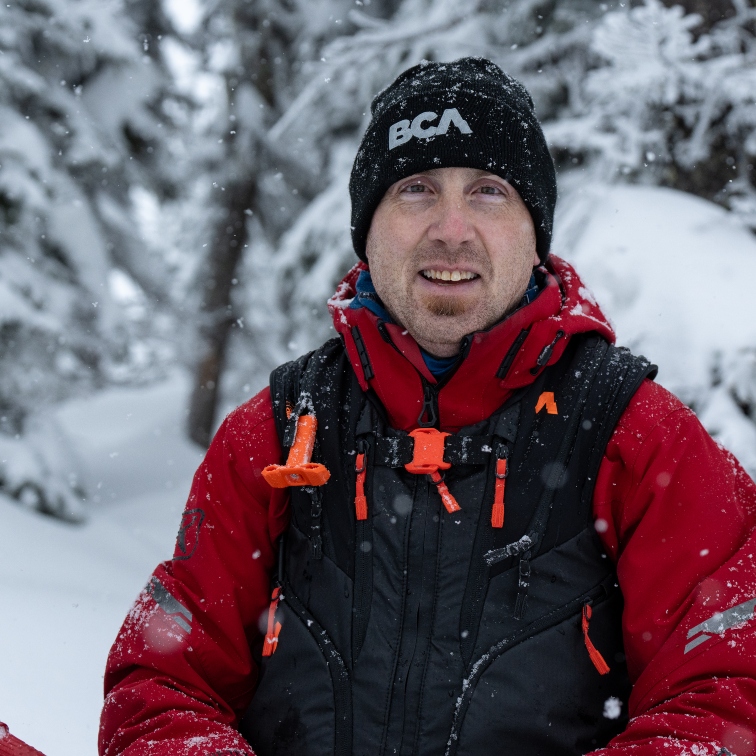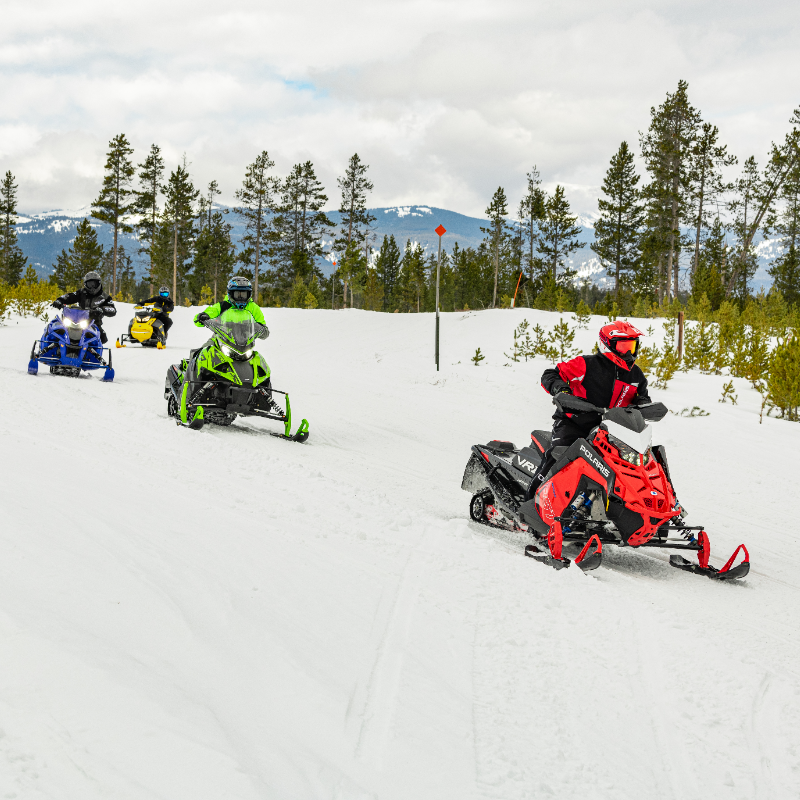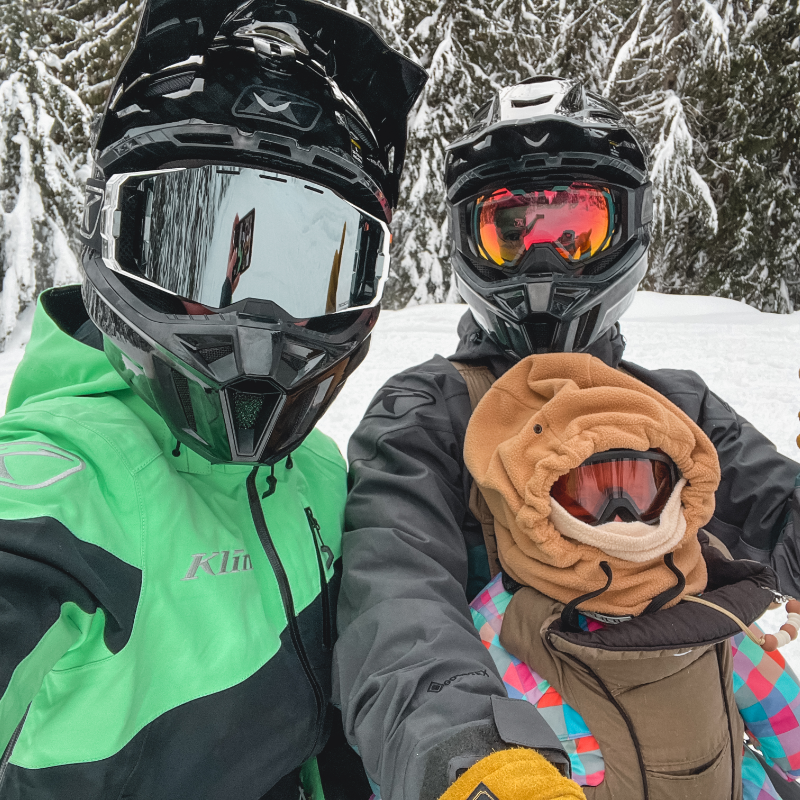While snowmobiling into the mountains on the B.C. Family Day long weekend, many of us found it impossible not to think about what happened in McBride a week earlier. Five members of our snowmobiling community lost their lives in a slide that affected 17 riders in total.
Since that day, there have been a lot of questions raised about the culture of backcountry snowmobiling. We had questions of our own and so we decided to pose them to professional avalanche skills training instructors who also happen to be avid mountain sledders. This is what they had to say:
In the years that you’ve been snowmobiling, have you noticed any changes in the level of avalanche awareness?
Curtis Pawliuk, Frozen Pirate Snow Services: Absolutely. The level of awareness has grown substantially over the last 10 years. Almost everyone has the basic equipment (shovel, transceiver and probe), and we are seeing more riders taking avalanche skills training courses. It is becoming more and more standard for trained riders to encourage and support others to take the training and get the experience needed to safely manage mountain terrain. With projects such as the creation of Sledcom (the snowmobile advisory committee to Avalanche Canada); more sledder-focused messaging from Avalanche Canada and the Mountain Information Network; and products such as Throttle Decisions, we are seeing more and more education and awareness efforts being directed towards this growing user group. With the actual number of riders out in the field on any given weekend in North America, the incident statistics are very low.
Wes Gano, Apex Alpine Adventures: Yes, it has, and snowmobile AST 1 is up seven per cent as of last year’s statistics. But as we drift further away from ski courses, our focus needs to go towards terrain evaluation and general safety in the mountains. Parking in terrain traps, one at a time on a slope, how to self-rescue off a slope and getting yourself unstuck or thinking ahead and having alternate routes need to come to the forefront of teaching techniques, as remote triggering is a very real and probable cause of episodes. We are also getting a very high number of search and rescue callouts (I am on No. 8 for the season) so the need for education on what a SPOT or InReach can do needs to be brought forward.
Amber (Wood) Granter, Trigger Point Avalanche Training: Definitely, yes! Riders started to realize that they need to be familiar with the decision making that goes on when riding in avalanche terrain. It has become widely accepted that a basic level of avalanche rescue training is required if we want to recreate in the mountains. Now, most folks are coming to a skills training course with a riding partner or in riding groups instead of sending one person from their riding group in order to bring back some information. We are also seeing an increase in folks continuing their education by taking the Avalanche Skills Training Level 2 (AST 2) course and/or the Companion Rescue Course.
Lori and Randy Zacaruk, Zac's Tracs Avalanche Training: Individual riders would attend our classes 15 years ago primarily motivated by how to run their beacon. This meant they had accepted full burial as a possibility in their day. Now, we are seeing whole riding groups motivated to learn how to not get caught. Nice! Prevention is the key!
What do you think needs to change in order to prevent more fatalities from happening?
Todd Eberts, Niko Weis Avalanche Education: I think the culture needs to establish its image. We need the OEMs and the companies involved to step up and help promote this culture that is clearly here and not going anywhere. These are extremely capable machines that people without experience have the ability to hop on and sadly, be in the belly of the dragon fast. That education needs to be a prerequisite.
Pawliuk: We need to emphasize education, awareness, mentorship and practice and it needs to come from all angles—peers, magazines, video producers, equipment manufacturers, etc.
Jeremy Hanke, Soul Rides: This is a lifelong process. Snowmobiling in avalanche terrain is like learning how to drive a car and basically in this day and age, you’ve been handed a Ferrari but nobody has taught you how to handle that Ferrari when you’ve been driving a Tempo for the last 15 years. It’s a graduated process to learn how to drive a car. And in my personal opinion, AST 1 is a very, very entry-level course. That’s just to plant the seeds of what a brake pedal, a signal light and a gas pedal look like. It doesn’t mean you know how to operate them. Now, you have to learn what the stop signs are and what yield signals are and avalanche education is no different. In my personal opinion, to snowmobile in the mountains, for what the majority of people are doing, they need to be at an AST Level 2. They need to source out an AST 1, apply that information for a period of time and then grow up to an AST 2.
Zacaruk: While the minimum is an AST 1, we have to remember this is an introductory course focused on recognition and avoidance of avalanche terrain. Whether we're climbers or explorers, most of us are drawn to steeper terrain for at least a portion of our day. This steps up the minimum to an AST 2. Quality data gathering, stability assessments, route selection and group management are required if we are serious backcountry riders.
Granter: An appreciation for the importance of continued learning in developing avalanche decision competence. We see folks who are avid snowmobilers (riding over 200 days per year) with very little avalanche training. Just because you have a lot of miles on your sled does not make you competent in avalanche terrain. The experience and the training have to balance out. This is the point that most miss: training is only one step. It has to be the norm that people practice and continue learning. The progression for knowledge is an ongoing process and should never end at a two-day introductory course.
Is there anything else you’d like to add?
Pawliuk: Mountain snowmobiling has brought me many amazing things in life and I intend to do it for many years to come. I have made many friends, countless memories and seen the most beautiful places that only those with helicopters will ever have a chance to see. We are not a reckless bunch, and the accidents that happen in our sport affect us in many ways. As a relatively young activity, we have come a long way in a short period of time in relation to other mountain sports (that have also had their share of growing pains). We need to encourage good decisions and efforts, not solely focus on the bad ones. A culture of safety comes from learning from our past mistakes and teaching others how not to relive them. Remember that the terrain we recreate in is our choice, so choose wisely. Get educated, encourage others and ride safe!
From everyone here at SnoRiders, our sincere condolences go out to the family and friends of the snowmobilers who were involved in the McBride avalanche. This is a tough time for them and for the snowmobile community as a whole, so if you decide to comment, please keep it respectful and positive.







